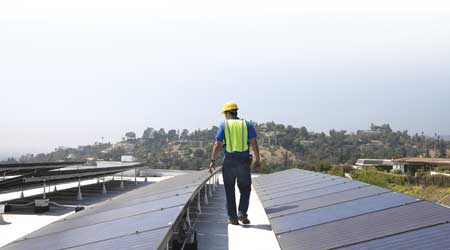Roofing Systems Intended to Provide Protection to Elements
Part two of a 3-part article on common roofing problems
Roofing systems are intended to provide protection from natural elements. Some roofing systems, especially those on factories, restaurants and fast food chains, require special care due to the presence of greases, oils, bacteria, and other agents that tend to adversely affect the integrity of the roof membrane.
Depending upon the number and type of contaminants, the roof system specifier must select the type of roofing system that will best satisfy all performance requirements.
Modified bitumen roofing membranes can be adversely affected by exposure to animal or vegetable cooking oils and greases. Membrane degradation typically occurs around exhaust vents, where the membrane has repeated contact with contaminants. The organic substances in the contaminants typically weaken and eventually break down the polymer-bitumen network, causing premature degradation.
Bacteria and fungi also can cause problems. Factories producing foods such as potato pulp and dry milk have reported cases of modified bitumen membrane decay due to bacteria. Such deterioration can lead to the decay of the membrane and surface coating. The degree of degradation depends on the type of microorganism, temperature and other climatic conditions, and the bitumen composition. Fungus growth, which typically occurs in hot and humid regions, does not cause the same detrimental effects as bacterial attack.
Other chemicals, such as solvents, acids, bases and oxidizing agents, can cause varying degrees of harm to polymer modified bitumen roofing membranes. Non-polar solvents can temporarily swell and soften polymer-modified bitumens, causing slumping and poor traffic resistance. They also can cause the polymers to separate from the asphalt.
While polymer modified bitumens have excellent resistance to various inorganic acids and bases, some of these chemicals can attack and degrade glass and polyester mats and fillers. Organic acids also can have detrimental effects. Strong oxidizing agents can attack the polymer and the bitumen in a membrane. When ponding water is present, inert, solid dusts also can contribute to mud cracking. All of these effects can lead to premature failure of the membrane.
To prevent problems, managers and technicians can take these steps:
• �Determine the types and concentrations of contaminants that might be present. When re-roofing, investigate the effects, if any, that contaminants present had on the existing roof before specifying and applying a new system.
• �Use commercially available traps and filters to prevent contaminants from being exhausted onto the roof.
• �Establish a maintenance program to monitor the affected roof sections and maintain traps or filters.
• �Provide positive drainage — at least ¼ inch per foot roof slope — to prevent ponding in the affected area.
• �If contaminant effects are minor, increase the number of plies, or add resistant coatings for adequate protection.
Related Topics:














